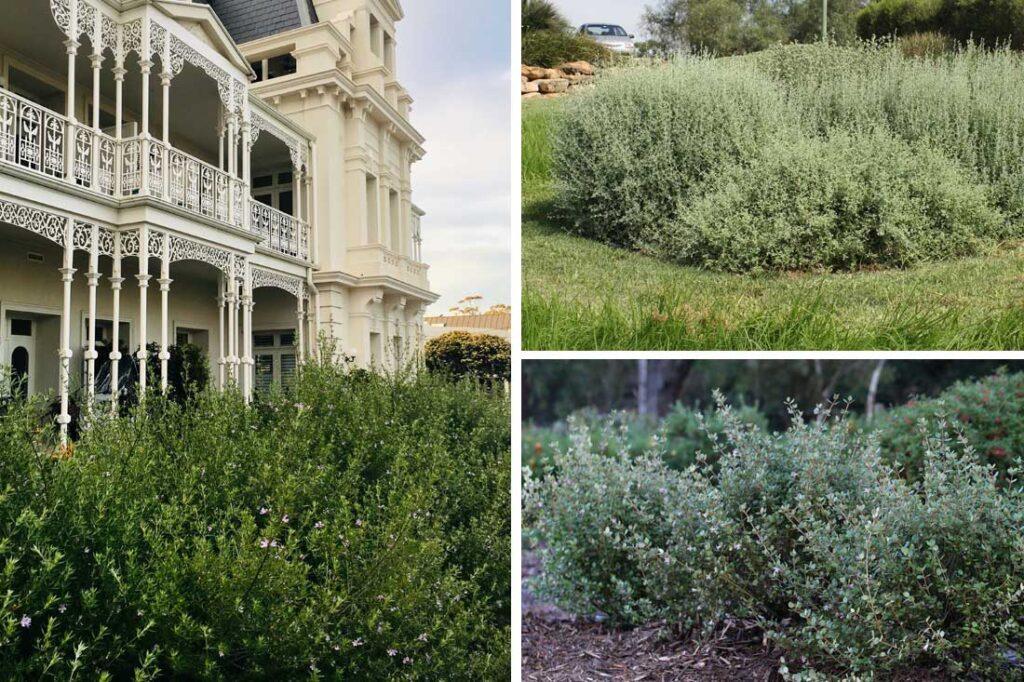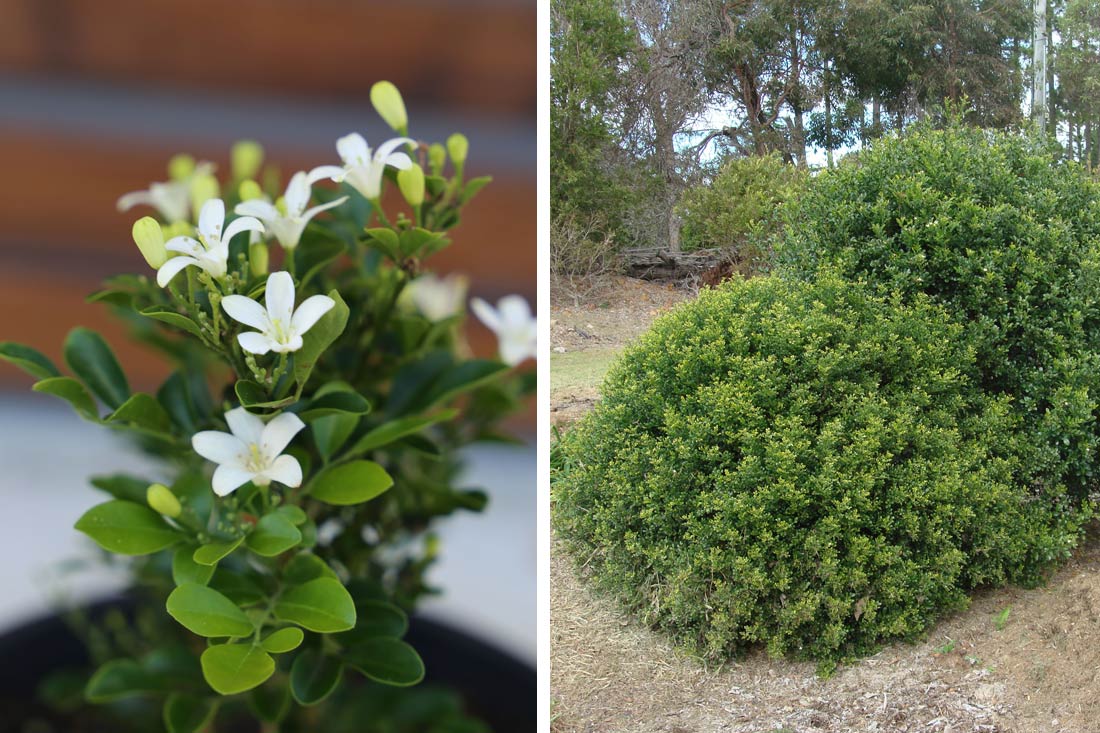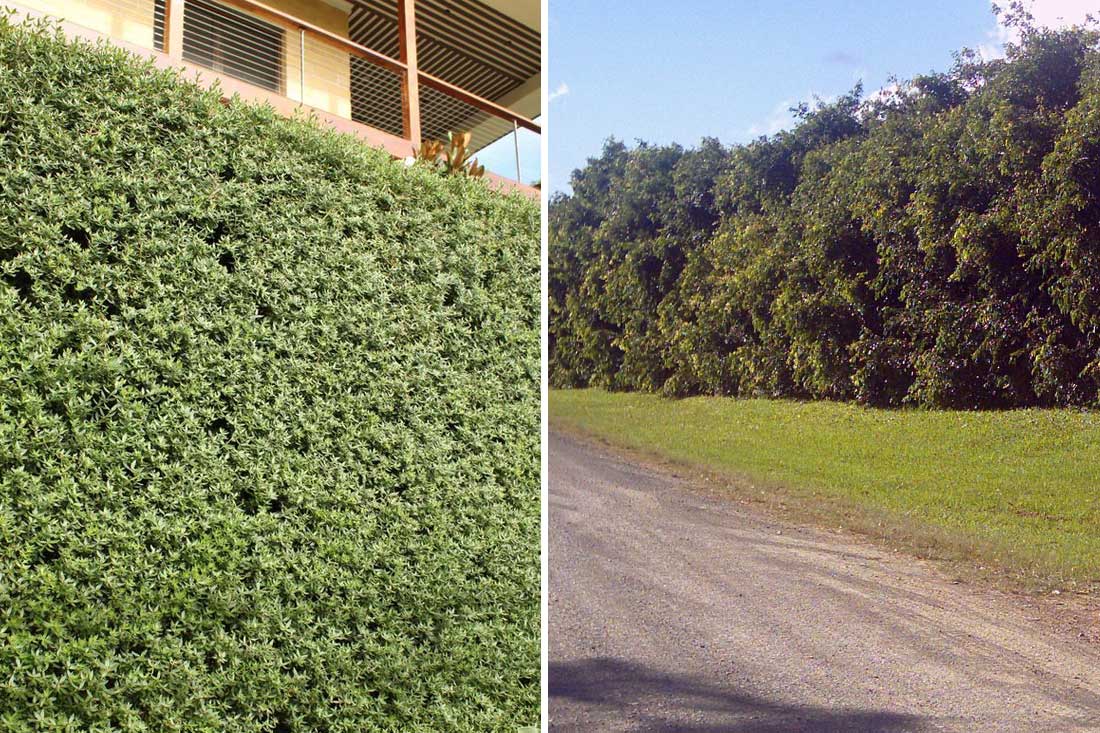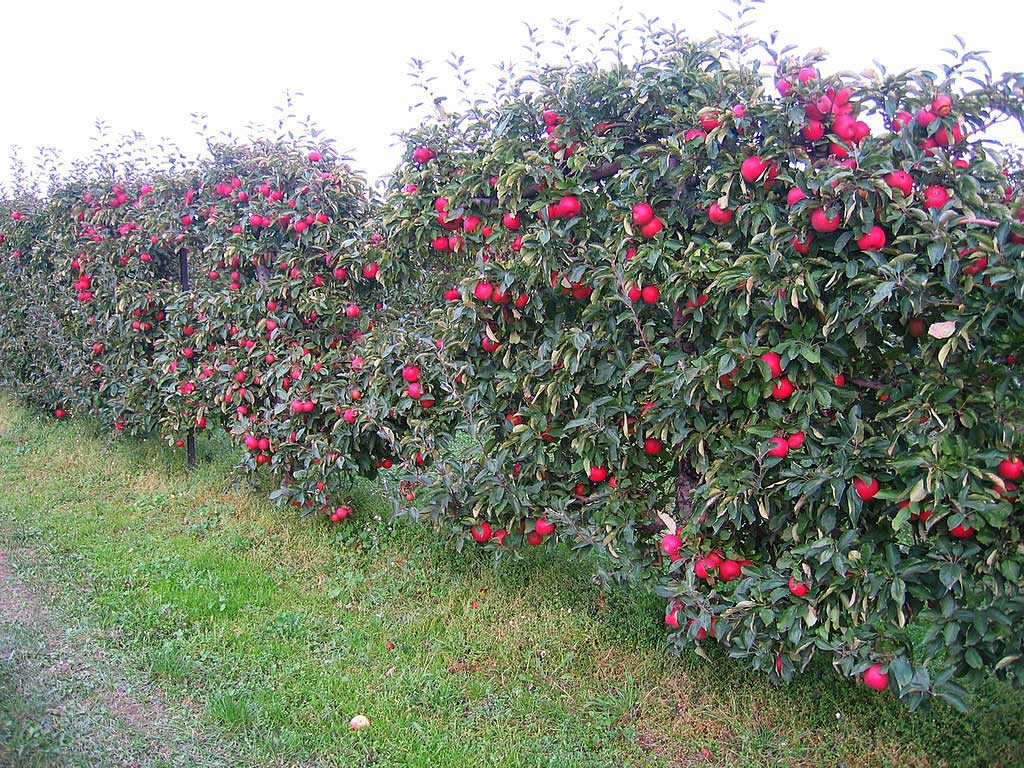Melbourne’s climate presents unique challenges and opportunities for specifying plants of all kinds, including screens and hedges. With a temperate climate characterised by four distinct seasons—hot, typically dryer summers, mild springs and autumns, and cool, typically wet winters—landscape architects prefer functional shrubby plants that respond well to pruning and tolerate beyond what the climate can throw at them.

Naringa™ Westringia at Beaumorris in Victoria.
Factors Limiting the Plant Palette
- Temperature Variability: Melbourne’s temperature can vary significantly within a single day, often experiencing rapid changes from cooler mornings to hot afternoons. Plants must be resilient to such fluctuations.
- Drought Conditions: Summers can be dry with occasional heatwaves, limiting the use of water-intensive plants. Drought-tolerant varieties are a good idea for non-irrigated gardens.
- Frost Sensitivity: Winters, while mild, can still see frost. Frost-sensitive plants may need protection or specific placement.
- Wind Exposure: Melbourne can experience strong winds, particularly in open areas and wind tunnels. Wind-tolerant plants or windbreaks are beneficial.
- Wet Winters: While summers can be hot and dry in Melbourne, the winters are cold and wet. Amending heavy clay soils to improve drainage can help to move rainwater down into the sub-soil water table. In many cases, physical drainage systems may need to be installed to widen the available plant palette.
Plant Characteristics for Melbourne Gardens
- Drought Tolerance: Plants that can thrive with minimal watering are a good idea due to periodic water restrictions.
- Frost Hardiness: Species that can withstand occasional frost ensure longevity through winter.
- Wind Resistance: Robust structure to withstand strong winds is beneficial, especially in coastal positions or in wind tunnels.
- Wet Feet Tolerance: Some Melbourne suburbs have heavy clay soils that retain moisture during wet winters. Plants that have a tolerance to wet feet are recommended, especially in depressed positions within the landscape.
Microclimate Considerations
- Slopes: Sloped areas influence drainage and sunlight exposure. North-facing slopes are sunnier and warmer, ideal for sun-loving plants, while south-facing slopes are cooler and shadier, suitable for shade-tolerant species.
- Shade Levels: Varying levels of shade from buildings, trees, and other structures create microclimates within gardens. Shade-tolerant plants are necessary for heavily shaded areas.
- Drainage: Proper drainage is vital. Poorly drained soils can lead to root rot. Raised beds or selecting plants that tolerate wet feet can mitigate this issue. Drainage systems can include rain gardens with appropriate plants, bio swales, and physical drainage systems using grates and ag pipe.
- Irrigation: Efficient irrigation systems, such as drip lines, help conserve water and ensure plants receive adequate moisture without spraying off target.
- Soil Types: Melbourne’s soil varies from sandy and hydrophobic to clayey and compacted. Soil amendments and choosing plants suited to the existing soil type are fundamental. Sandy soils benefit from organic matter to improve water retention and water crystals or kaolin clay to prevent hydrophobicity, while clay soils benefit from gypsum to break them apart in the short term, and regular inputs of organic matter to improve structure and drainage in the long term.
5 Plants that Landscape Architects Love in Melbourne
Part of my role as horticulture consultant at Ozbreed is to speak with landscape architects about plants – it’s one of the reasons I love my job so much. They have a myriad of factors that come into play for every single plant specification. I’ve noticed that there’s a shift towards more native palettes with a mix of dependable cultivars as well as variable endemics, but exotic plants are definitely still a big part of the picture.
Here are five hedging plants of varying sizes that I’ve seen Melbourne-based landscape architects get particularly excited about.
Aussie Flat Bush™ Rhagodia spinescens ‘SAB01’ PBR
Aussie Flat Bush™ Rhagodia is a low-growing, compact shrub with blue foliage, ideal for inland and coastal situations. It serves well as a ground cover for roadsides, as a border plant, as well as along slopes and retaining walls where it cascades down beautifully. Landscape architects love it for dry positions that lack irrigation because of its extreme drought hardiness, especially in coastal positions with salt spray. Hedge prune it as a low border or a shrubby ground cover.
Size
The plant typically reaches 30-50 cm in height and spreads up to 1 metre wide.
Climate Tolerance
This shrub thrives in full sun to light shade and adapts to most soil types as long as they don’t remain waterlogged, including heavy soils. It is highly drought-tolerant and withstands frost down to -5°C. Suitable for NSW, ACT, VIC, QLD (non-humid inland areas), SA, and WA.
Care Instructions
Water as needed for 8-13 weeks until established. Plant in a well-mulched garden, using chunky mulch. Apply slow-release fertiliser in spring if necessary. Prune twice yearly for best appearance; minimal pruning is required on roadsides.
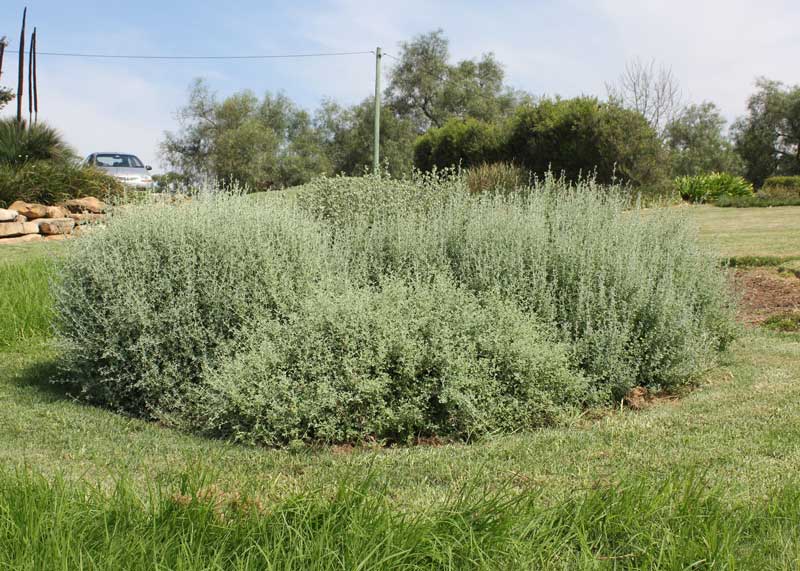
Coastal Pink™ Correa alba ‘COR10’ PBR
Coastal Pink™ Correa is a compact, evergreen shrub known for its vibrant pink flowers in autumn and winter. It is well-suited for coastal conditions and adds colour to gardens during cooler months. Landscape architects love it because it’s one of the best-performing correas available, it doesn’t experience as much dieback as other varieties, and the delicate pink flowers truly are amazing.
Size
The plant can grow larger than 2m high x 2m wide when left unpruned, though it can be kept much smaller as a hedge.
Climate Tolerance
It thrives in full sun to light shade, tolerates coastal winds, frost, and drought, and adapts to various soil types, including sandy soils. Suitable for NSW, ACT, VIC, TAS, SA, and WA.
Care Instructions
Water as needed for 8-13 weeks until established. Use chunky mulch for best results. Apply slow-release fertiliser in spring if necessary. Minimal pruning is required to maintain shape.
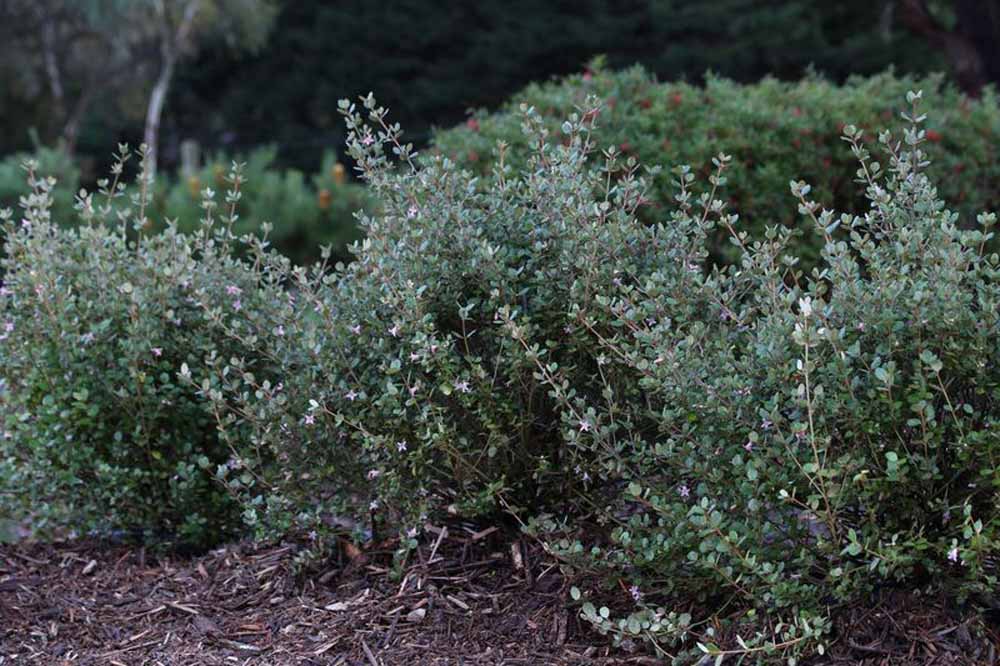
Naringa™ Westringia hybrid ‘WES01’ PBR
Naringa™ Westringia is a robust, fast-growing evergreen shrub ideal for hedging and screening. It produces mauve flowers in spring and occasionally throughout the year. Landscape architects love it because it’s a tall westringia that provides screening, while most varieties never quite get tall enough. It’s also a lot tougher in dry positions, experiencing less defoliation than other westringias.
Size
The plant typically grows 2.2 metres high and 1.5 metres wide when left unpruned.
Climate Tolerance
It thrives in full sun to light shade, tolerates heat, frost, and coastal conditions. Loves drought, but hates flooding. Suitable for NSW, ACT, VIC, SA, WA, and TAS.
Care Instructions
Water as needed for 8-13 weeks until established. Use chunky mulch for optimal growth. Prune 1-3 times per year to maintain the desired shape and height. Apply slow-release fertiliser in spring if necessary.
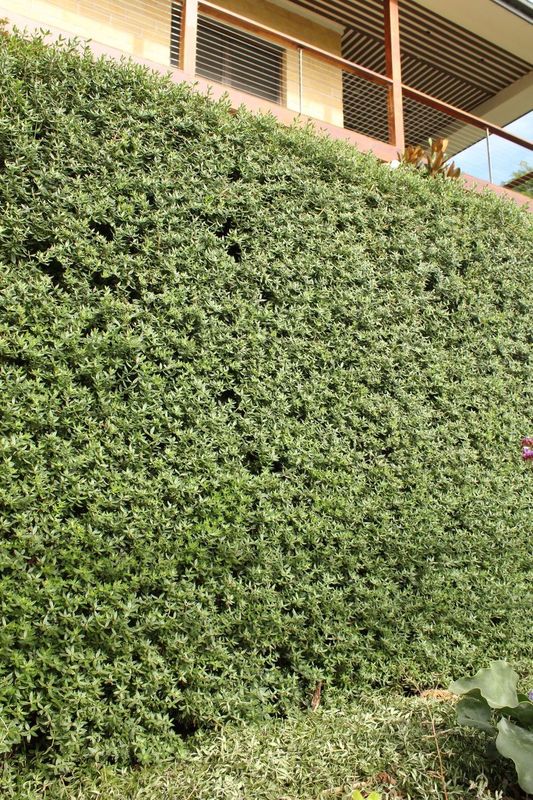
Slim™Callistemon viminalis ‘CV01’ PBR
Slim™ Callistemon is a narrow, upright evergreen shrub, ideal for tight planting areas and hedging. It features vibrant red bottlebrush flowers in spring and autumn. Landscape architects love it because it flowers profusely in spring and again sporadically throughout the year, it can tolerate flooding and drought, and it has a convenient columnar growth habit that works well for screening in tight spaces and as a natural fence or wind break.
Size
The plant typically grows 3 metres high and 1.3 metres wide but can get larger when left unpruned.
Climate Tolerance
It thrives in full sun to part shade and adapts to a variety of soil types, including clay and sandy soils. It tolerates drought, frost, and coastal conditions. Suitable for NSW, ACT, VIC, TAS, SA, WA, and QLD.
Care Instructions
Water as needed for 8-13 weeks until established. Use chunky mulch for best results. Prune annually after flowering to maintain shape. Apply slow-release fertiliser in spring if necessary.
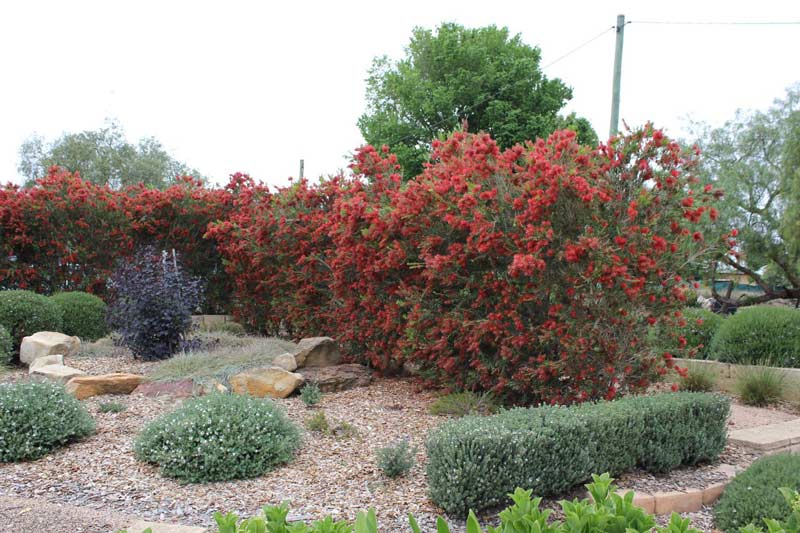
Cosmic White™ Rhaphiolepis indica ‘RAPH01’ PBR
Cosmic White™ Rhaphiolepis is a robust, evergreen shrub known for producing masses of large white flowers in spring, with spot flowering throughout the year. It has clean foliage and excellent disease resistance. Landscape architects love it because it flowers profusely for most of the year with blooms larger than the common form, it can tolerate flooding and drought, it doesn’t produce viable seeds, and only needs pruning every two years to maintain its shape.
Size
The plant typically grows 1.5 – 2 metres high and 1.5 metres wide.
Climate Tolerance
It tolerates frost, drought, and coastal conditions, thriving in full sun to moderate shade. Suitable for sandy to well-drained clay soils. This plant is adaptable across QLD, NSW, ACT, VIC, TAS, NT, SA, and WA.
Care Instructions
Water as required for 8-13 weeks until established. Plant in a well-mulched garden with chunky mulch. Use slow-release fertiliser in spring if necessary. Prune to shape every two years after flowering.
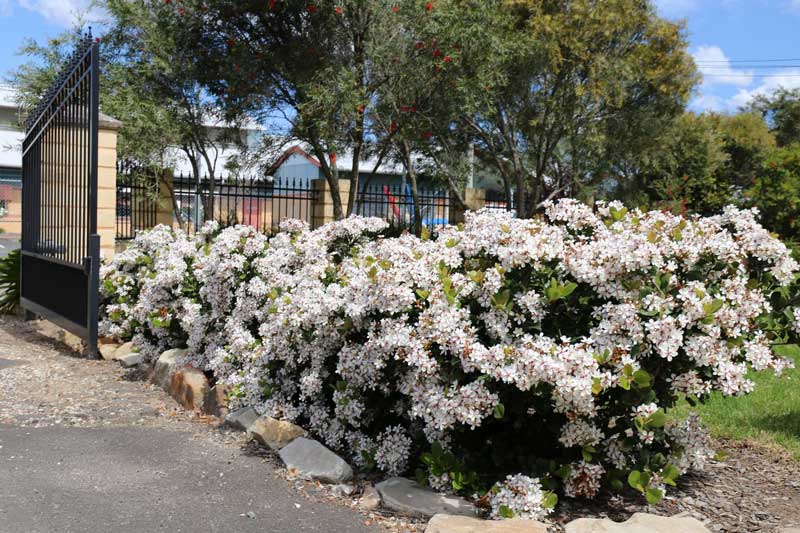
https://www.ozbreed.com.au/plant-ranges/hardy-exotic-range/cosmic-white-rhaphiolepis/
Conclusion
The climate and varied microclimates of Melbourne necessitate a thoughtful approach to horticulture and landscape design. By selecting drought-tolerant, frost-hardy, and wind-resistant hedge and screening plants and considering factors like slopes, shade, drainage, irrigation, and soil types, garden designers can create resilient and thriving landscapes adapted to Melbourne’s unique conditions. I hope you find the 5 hedge and screen plants that landscape architects love for Brisbane helpful!

